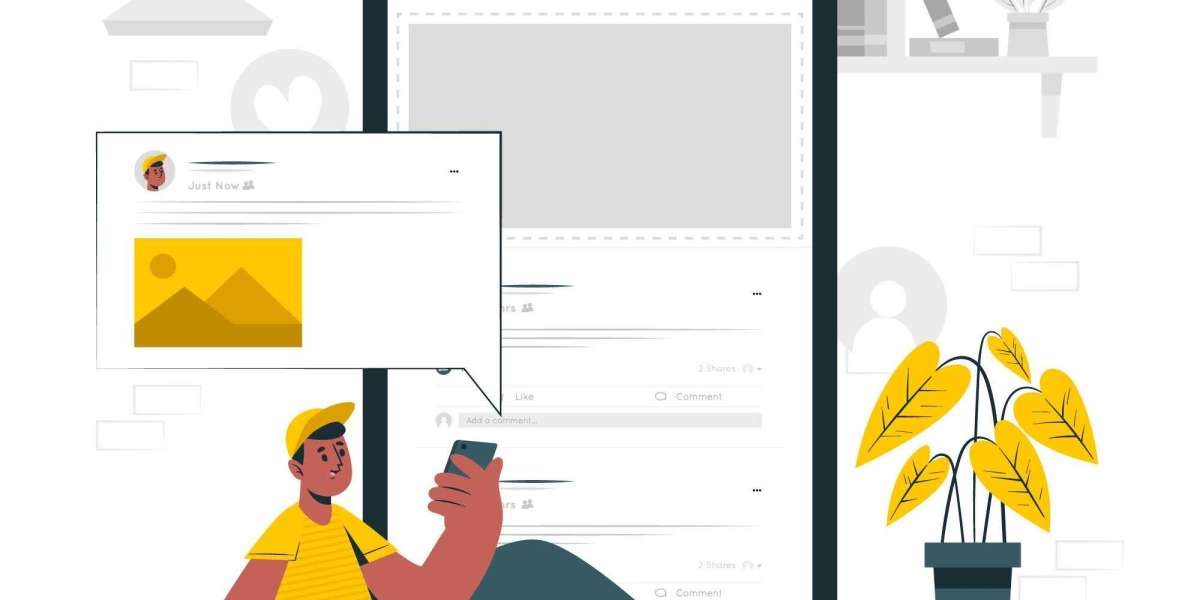In today’s mobile-first era, a sleek, intuitive, and user-focused design isn’t just a luxury; it’s a necessity. With users glued to their smartphones for everything from shopping to working, the demand for stellar mobile UX is at an all-time high.
Whether collaborating with a mobile app UI UX design consultancy or building your dream app in-house, getting it right can make or break your digital presence.
Understanding the Mobile-First Mindset
The shift toward mobile-first isn’t just a trend—it’s a revolution. Over 50% of global web traffic now comes from mobile devices. But here’s the kicker: mobile users expect experiences that are not only responsive but designed specifically for smaller screens.
Gone are the days of simply shrinking desktop designs to fit smartphones. Instead, mobile app UI/UX design services now focus on crafting experiences that feel tailor-made for users on the go.
A prime example is the move towards prioritizing minimalism in mobile interfaces. Too many elements can overwhelm a user, so streamlining content and interactions is key. Remember, mobile screens are small; every inch should count.
Prioritizing Speed and Simplicity
Mobile users are impatient. 53% of users leaves a site that takes more than three seconds to load. Speed and simplicity should be at the heart of every mobile design strategy.
How to Nail It:
- Minimize page load times by compressing images and optimizing code.
- Simplify navigation with concise menus and intuitive icons.
- Use lazy loading for non-critical resources to enhance perceived speed.
Designing for simplicity doesn’t mean sacrificing functionality. Think of it as creating an experience where less is more where every element has a purpose, and every interaction is seamless.
The Power of Thumb-Zone Design
Have you ever tried reaching the top corner of your phone screen with one hand? Not easy. That’s where thumb-zone design comes into play. By focusing on touch-friendly layouts, mobile UI UX design services ensure that all critical actions are within easy reach.
Use the “touch rule”—design for one-handed use. Place key buttons and actions in the lower third of the screen, where thumbs naturally hover. This approach improves usability and reduces user frustration, especially for on-the-go interactions like scrolling and tapping.
Leveraging micro-interactions for Delight
Microinteractions are the small details that make a big difference. From a button lighting up when pressed to a playful animation when you complete an action, these moments of Delight can elevate your app’s UX.
Why It Matters:
- Enhances user engagement.
- Creates a memorable brand identity.
- Reinforces user actions by providing immediate feedback.
For example, when users add an item to their cart, a subtle animation can make the interaction feel satisfying and rewarding. These small touches build emotional connections with users.
Designing for Accessibility
An inclusive design is a winning design. Accessibility ensures that your app or website is usable by everyone, including those with disabilities.
Key Considerations:
- Use high-contrast color schemes to improve visibility.
- Include text alternatives for images to cater to screen readers.
- Design with keyboard navigation and voice commands in mind.
With more organizations focusing on inclusivity, accessibility has become a benchmark for quality. It’s not just about compliance; it’s about creating a product everyone can enjoy.
Harnessing the Power of Visual Hierarchy
Visual hierarchy isn’t just about making things look good but guiding users’ attention. By strategically using size, color, and placement, designers can lead users to the most important elements of a page.
How It Works:
- Highlight CTAs with bold colors to grab attention.
- Use larger fonts for headlines to establish importance.
- Group related content together to make a logical flow.
Take e-commerce apps as an example. The product image and price should be the first things a user notices, followed by the “Add to Cart” button. Proper hierarchy ensures users can navigate effortlessly.
Optimizing for Offline Access
Let’s face it: mobile users don’t always have a stable internet connection. By designing for offline functionality, you can keep users engaged even without Wi-Fi.
- Allow users to save articles, playlists, or maps for offline access.
- Sync data automatically when the connection is made.
This approach is especially beneficial for travel and productivity apps. Offline functionality can be a game-changer, enhancing user loyalty and satisfaction.
Testing, Testing, and More Testing
The secret sauce to great UX is testing. A/B testing, usability testing, and real-world feedback are crucial for refining your design.
- Test across multiple devices and screen sizes to ensure consistency.
- Gather feedback from diverse user groups to identify pain points.
- Conduct heatmap analyses to understand user behavior.
Iterative testing allows you to tweak and optimize the design, make sure it meets the needs of your target audience.
Designing for Emerging Technologies
With technological advancements, designing for mobile now includes integrating features like voice search, augmented reality (AR), and artificial intelligence (AI). These technologies are shaping the future of mobile UX.
Examples:
- Voice commands for hands-free navigation.
- AR filters in shopping apps to visualize products in real-time.
- AI-driven personalization to recommend content and features.
By embracing these innovations, mobile-first website design companies can convey cutting-edge solutions that stand out in a crowded market.
Why Partner with Experts?
Designing for mobile isn’t a solo endeavor. Collaborating with experts like a mobile first website design company can help you navigate complexities and deliver exceptional results.
- Deep industry knowledge and best practices.
- Access to the latest tools and trends.
- Tailored solutions for your unique needs.
Partnering with experts ensures your design aligns with user expectations while leveraging the latest innovations.
Final Thoughts
Designing for the mobile-first era is an art and a science. From thumb-friendly layouts to delightful micro-interactions, every detail matters. By focusing on the user, embracing innovation, and partnering with the correct experts, you can create mobile experiences that meet and exceed expectations.
As mobile usage grows, the importance of thoughtful, user-centric design will only increase. Whether you’re building an app from scratch or optimizing your existing site, remember it’s all about making life easier (and a little more fun) for your users.

